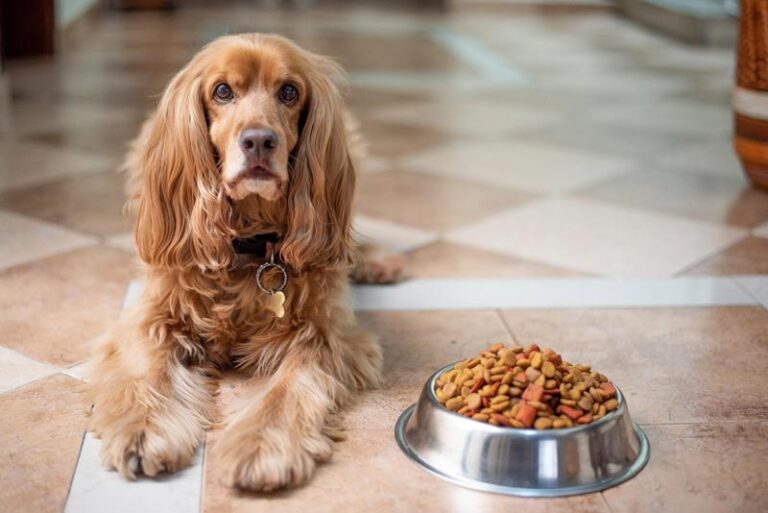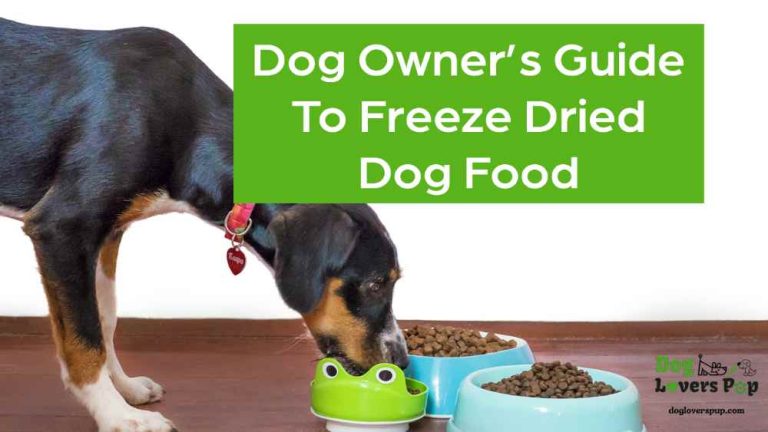The Risks of Leukemia in Dogs and How to Prevent It
- Last updated on February 2, 2023
- By: Caroline Stowe
If you’re a pet parent, the health of your pup is probably always on your mind. One of the most concerning illnesses that can affect dogs is canine leukemia, which is caused by a virus known as a canine leukemic virus (CaLV).
While it’s not the most common type of cancer found in dogs, it can still be extremely serious and devastating for pet owners when their beloved pup is diagnosed with this disease.
While it is rare, it’s important to understand the risks, symptoms, and ways to prevent your pup from getting this disease.
In this blog post, we’ll discuss the risks of leukemia in dogs and how you can help protect your furry friend from ever developing this condition.
What Is Canine Leukemia ?

Leukemia is a cancer of the blood cells that affects both humans and animals. In dogs, there are two main types of leukemia: chronic myelogenous leukemia (CML) and acute lymphoblastic leukemia (ALL).
CML is the most common form of canine leukemia, while ALL is rare. It’s important to note that these two forms of leukemia have different symptoms and treatments, so if your dog does develop any concerning symptoms, make sure you get them checked out by a vet as soon as possible.
These types of viruses are unique because they insert their genetic material into the host cell’s DNA—in this case, a dog’s cells—which then replicate throughout the body.
In other words, once CaLV infects a dog’s cells, its genetic material spreads throughout the dog’s body and replicates itself. This can lead to cancerous tumors in different parts of the body.
What are The Causes of Leukemia in Dogs ?
Inherited Diseases
Certain inherited canine diseases can cause a dog to develop leukemia. These include certain blood disorders such as hemophilia and von Willebrand disease, as well as certain autoimmune diseases like systemic lupus erythematosus (SLE) and immune-mediated thrombocytopenia.
Exposure to Chemicals
Some dogs may be exposed to certain chemicals or pollutants in their environment that can increase their risk of developing leukemia. These include pesticides, smoke, and paint fumes.
Radiation Exposure
Dogs that are regularly exposed to radiation (such as X-rays) can have an increased risk of developing leukemia.
Viral Infections
Viruses such as canine parvovirus, canine distemper virus (CDV), and feline leukemia virus can increase a dog’s risk of developing leukemia.

Age
Older dogs over 8 years old are at greater risk and are more likely to develop leukemia than younger ones due to the cumulative effect of age-related changes in their bodies.
Breed
Certain dog breeds such as Rottweilers and Labrador Retrievers are more prone to developing CML.
What Are The Common Signs and Symptoms of Leukemia in Dogs
Lethargy
Dogs with leukemia may be less active than usual and have decreased energy levels.
Weight Loss
Rapid weight loss is one of the most common signs that a dog has leukemia.
Swollen Lymph Nodes
Swollen lymph nodes, or lymphadenopathy, are another common symptom of canine leukemia.
Anemia
Anemia is a common side effect of canine leukemia, as the cancerous cells can interfere with the production and release of healthy red blood cells from the bone marrow.
Behavior Changes
Dogs with leukemia may experience changes in their behavior, such as increased aggression, irritability, or depression.
Poor Appetite
Dogs with leukemia often have no appetite or a decreased interest in food.
Check the video below to identify leukemia signs in dogs.
How to Diagnose Leukemia in Dogs
Complete Blood Count (CBC)
This is the most common and basic test used to diagnose canine leukemia. A CBC measures the number of red blood cells, white blood cells, and platelets in a sample of blood.
Abnormal levels can indicate that there may be an issue with the dog’s bone marrow, which could point to leukemia.
Urinalysis
This test measures the number of certain substances in a sample of urine, such as glucose and protein. Elevated levels of these substances can point to underlying issues like cancer or kidney disease.
Biopsy
If the vet suspects that your dog has leukemia, they may take a sample of the affected tissue (usually from a lymph node) to be analyzed in a laboratory. This can help confirm their diagnosis and determine what type of leukemia your dog has.
X-Rays
X-rays are used to detect any tumors or enlarged organs that may be caused by cancerous cells. If a tumor is detected, the vet may take a biopsy to further investigate.
Ultrasound
Ultrasound is used to visualize the internal organs of your dog and can detect any tumors or masses that are caused by leukemia.
What are The Treatment Options for Leukemia in Dogs
Chemotherapy
This is one of the most common treatments for canine leukemia and involves using drugs to kill cancerous cells.
Radiation Therapy
Radiation therapy uses high-energy radiation to destroy cancerous cells while leaving healthy ones intact. This is often used in conjunction with chemotherapy to reduce the size of tumors.
Bone Marrow Transplant
In some cases, a bone marrow transplant may be necessary to replace the cancerous cells in the dog’s body with healthy ones. This is an intensive and expensive procedure, but can potentially save your dog’s life if it is successful.
Immunotherapy
This type of treatment uses specially-designed antibodies to target and destroy cancerous cells while leaving healthy ones unharmed. It can be used in combination with other treatments or as a standalone therapy.
Diet and Supplements
Certain dietary changes and supplements can help boost your dog’s immune system and help them fight cancer. These can include things like probiotics, omega-3 fatty acids, vitamin C, and other antioxidants.
Alternative Therapies
There are many alternative therapies that can be used to help treat canine leukemia, such as acupuncture, herbal remedies, and homeopathy. Talk to your vet about which ones might be right for your pup.
Surgery
If the vet finds a tumor in the dog’s body, they may recommend surgery to remove it.

Palliative Care
This type of care is focused on providing comfort and pain relief to dogs with terminal illnesses, such as canine leukemia. It may include things like medications, special diets, physical therapy, and more.
It’s important to remember that each dog is different, and the treatments that may work for one pup may not work for another. Talk to your vet about the best options for your dog’s specific situation.
In addition to medical treatments, it’s important to give your pup plenty of love and emotional support during this difficult time.
Your pup will need all the extra love and attention you can give them, so make sure to spend quality time with them every day. This could include playing fetch, going for walks, giving belly rubs, or just snuggling up on the couch.
How Can I Protect My Dog From Developing Leukemia ?
The good news is that there are several things you can do to protect your pup from developing canine leukemia:
Vaccinate Your Dog
The best way to protect against CaLV is to vaccinate your pup against it. Talk to your vet about what type of vaccine they would recommend for your specific breed and age group.
Avoid Unfamiliar Dogs
If you take your pup out for walks or hikes, it’s important to avoid contact with unfamiliar dogs. This will reduce their chances of being exposed to CaLV or other contagious diseases.
Practice Good Hygiene
Make sure your pup has regular baths and grooming sessions; this will help keep their fur clean and free from bacteria and viruses that could cause infection or illness.
Additionally, make sure any items they may come into contact with regularly (e.g., toys, bedding) are kept clean too!
Monitor Your Pup Closely
Pay attention to any changes in behavior or physical condition; if anything seems off don’t hesitate to take them in for a check-up at the vet right away!
Early detection can make a huge difference in the outcome of canine leukemia cases.
Regular Vet Checkups
Make sure that your dog is receiving regular checkups with their veterinarian, as this will give them the opportunity to be screened for any potential health problems, including leukemia.
This should include blood tests and other tests, such as x-rays and ultrasounds.
Healthy Diet and Exercise
Feeding your dog a high-quality, balanced diet and making sure they get plenty of exercises can help boost their immune system and keep them healthy.

Conclusion
Leukemia in dogs can be a devastating diagnosis, but with the right care and treatments, your pup can still live a long and happy life.
Take the time to learn more about canine leukemia, and how you can help your pup stay healthy and happy.
Talk to your vet about all of your options and make sure to give your pup extra love during this difficult time. With the proper care, you and your pup can get through this together.
Remember that prevention is key when it comes to canine leukemia, so be sure to take all of the necessary steps to keep your pup safe and healthy.
-
Author: Caroline Stowe
- Updated on February 2, 2023
Disclaimer: This article doesn’t intend to replace professional veterinary advice, nor should it be used as a substitute for veterinary services, diagnosis, or treatment. The content on this website, including information and opinions expressed herein, are intended for general informational purposes only. In case you have concerns or questions regarding your dog’s health and diet requirements, please consult your veterinarian before doing anything that might affect it.
DogPetGuide.com and the writer are not responsible or liable for any damage, liability, costs, or claims arising from any possible consequences of the reader’s action after reading this article.




